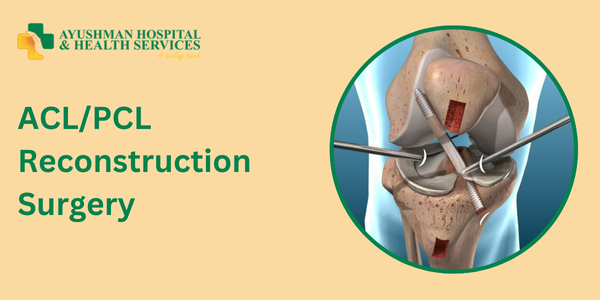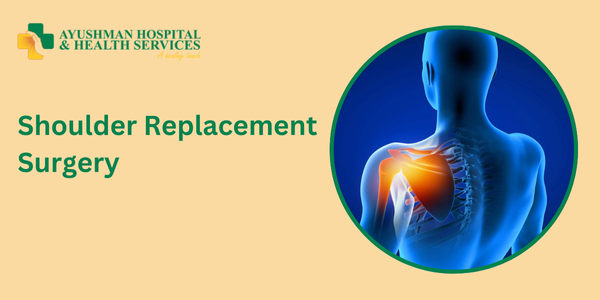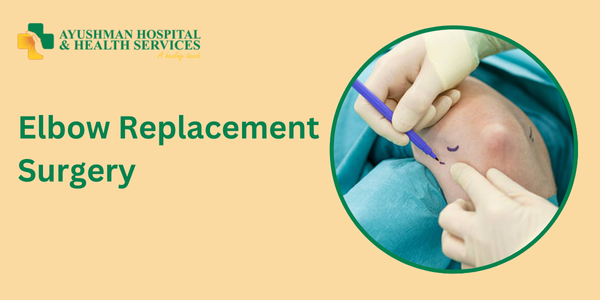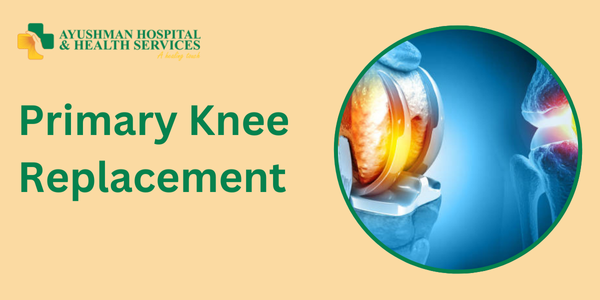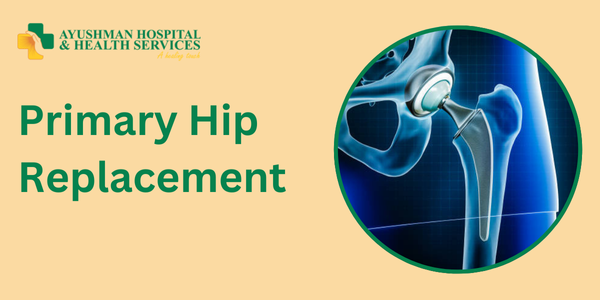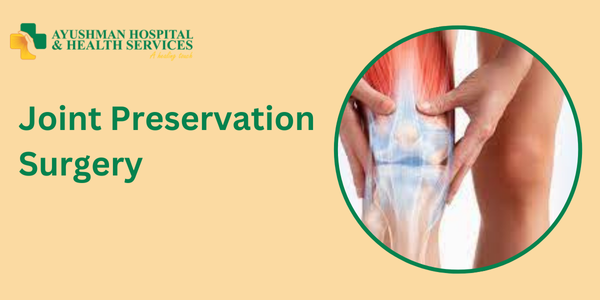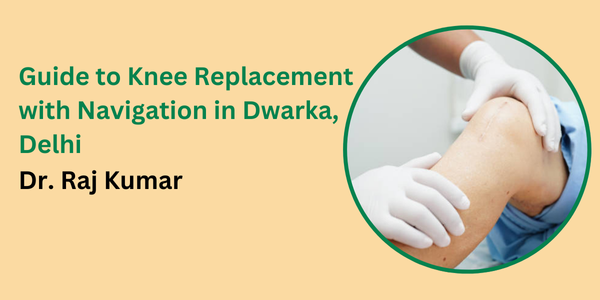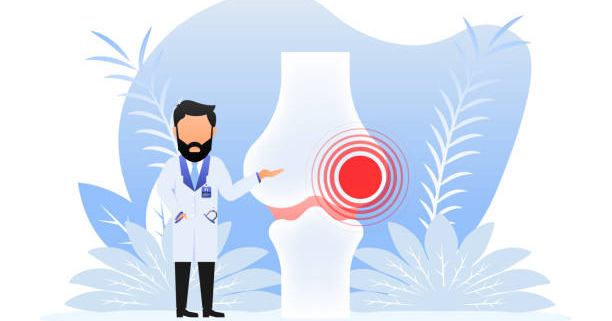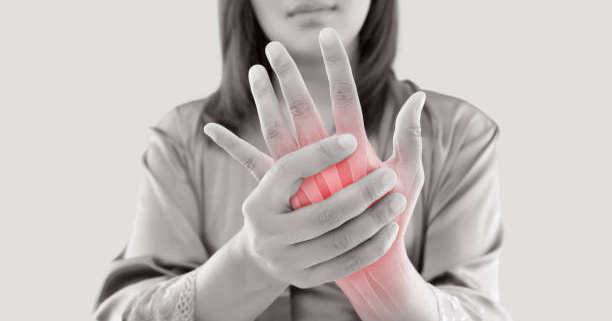Rotator cuff injuries can be life-altering, affecting daily activities and causing chronic pain that disrupts work, hobbies, and overall quality of life. In this blog, we’ll explore everything you need to know about rotator cuff repair surgery—what it is, how it is performed, and why Ayushman Hospital in Dwarka, Delhi, is an excellent choice for this procedure. Written in simple language and designed to be easy to understand, this guide will walk you through the anatomy of the shoulder, the causes and symptoms of rotator cuff injuries, treatment options, the surgical process, recovery, and tips for long-term shoulder health.
Understanding the Shoulder and the Rotator Cuff
What Is the Rotator Cuff?
The rotator cuff is a group of muscles and tendons that surround the shoulder joint. These muscles are responsible for keeping the head of your upper arm bone firmly within the shallow socket of the shoulder. In simpler terms, the rotator cuff helps you lift and rotate your arm, ensuring smooth and controlled movement.
Why Is the Rotator Cuff Important?
Because your shoulder is one of the most mobile joints in the body, the rotator cuff plays a critical role in maintaining stability. Any damage to these muscles or tendons can lead to pain, limited range of motion, and sometimes, complete loss of function in the affected shoulder. This is why understanding and treating rotator cuff injuries is vital for anyone suffering from shoulder discomfort.
What Causes Rotator Cuff Injuries?
Common Causes and Risk Factors
- Aging: As we age, the tendons in the rotator cuff can degenerate. This natural wear and tear make them more susceptible to injuries, even with minimal stress.
- Repetitive Motion: Frequent overhead activities, such as painting, carpentry, or even professional sports like tennis and baseball, can lead to gradual tendon damage.
- Acute Trauma: Accidents, falls, or sudden impacts can cause a tear in the rotator cuff. This type of injury often occurs in younger individuals who are active.
- Overuse: Continuous use of the shoulder without proper rest, particularly in manual labor or high-impact sports, can lead to inflammation and eventual injury.
Signs and Symptoms of a Rotator Cuff Injury
- Persistent Shoulder Pain: Pain that worsens at night or when lying on the affected side.
- Limited Range of Motion: Difficulty in lifting or rotating the arm.
- Weakness: Noticeable weakness in the shoulder, making it hard to perform daily tasks.
- Clicking or Popping: Some patients report hearing or feeling clicks during shoulder movements.
- Swelling and Inflammation: Inflammation can develop around the injured tendon, leading to discomfort and limited mobility.
Early detection and proper diagnosis are crucial for effective treatment. In many cases, patients first try non-surgical treatments; however, when these measures fail to alleviate the symptoms, surgical intervention may become necessary.
Diagnosing a Rotator Cuff Injury
How Doctors Diagnose the Injury
A thorough diagnosis begins with a physical examination. The doctor will ask you to move your arm in different ways to assess the level of pain and determine the affected area. Imaging tests are also an integral part of the diagnosis:
- X-rays: While X-rays don’t show soft tissues like tendons, they can rule out other conditions such as bone spurs or arthritis.
- MRI (Magnetic Resonance Imaging): This test provides detailed images of soft tissues and is essential for determining the extent of a rotator cuff tear.
- Ultrasound: This is a cost-effective method that uses sound waves to create images of the rotator cuff, helping to identify tears or inflammation.
These diagnostic tools ensure that the surgeon can plan the most effective treatment approach, whether it’s non-surgical management or rotator cuff repair surgery.
Treatment Options: From Conservative to Surgical
Non-Surgical Treatments
Before considering surgery, doctors often recommend conservative treatment, especially for partial tears or mild symptoms. These treatments may include:
- Rest and Activity Modification: Avoiding activities that aggravate the shoulder can help reduce inflammation.
- Physical Therapy: A tailored exercise program can strengthen the shoulder muscles and improve flexibility.
- Medications: Anti-inflammatory drugs and pain relievers can help manage discomfort.
- Corticosteroid Injections: In some cases, a doctor might inject steroids directly into the shoulder to reduce inflammation and pain.
While these treatments can be effective for some, they might not work for everyone—especially if the tear is severe or if the pain persists over time.
When Is Surgery Necessary?
Surgery becomes necessary when:
- The tear is large or complete.
- Conservative treatments have failed to relieve symptoms.
- The patient experiences significant loss of shoulder function or persistent pain.
- The injury limits daily activities and quality of life.
If you fall into any of these categories, a discussion with a qualified orthopedic surgeon is the next best step. They will assess your situation and determine if rotator cuff repair surgery is the appropriate course of action.
The Basics of Rotator Cuff Repair Surgery
What Is Rotator Cuff Repair Surgery?
Rotator cuff repair surgery is a procedure aimed at reattaching the torn tendon to the head of the humerus (the upper arm bone). The surgery can be performed using different techniques:
- Arthroscopic Surgery: A minimally invasive procedure where small incisions and a tiny camera (arthroscope) are used to guide the surgery.
- Open Surgery: In some cases, a larger incision is made to give the surgeon a better view of the shoulder. This method is typically reserved for more complicated or extensive tears.
Steps Involved in the Surgical Procedure
- Anesthesia: The procedure is usually performed under general anesthesia, which means you will be asleep during the surgery.
- Incision and Access: For arthroscopic surgery, small incisions are made around the shoulder. Open surgery involves a larger incision along the shoulder.
- Visualization and Assessment: The surgeon uses an arthroscope (in minimally invasive surgery) or direct vision (in open surgery) to examine the torn tendon and surrounding tissues.
- Repair Process: The torn tendon is carefully stitched back to the bone using special anchors and sutures. The goal is to restore the normal function of the rotator cuff.
- Closing the Incision: Once the tendon is secured, the incisions are closed with sutures or staples.
The entire process typically takes between one to two hours, depending on the complexity of the tear and the surgical technique used.
Why Choose Ayushman Hospital, Dwarka, Delhi?
World-Class Facilities and Expert Surgeons
Ayushman Hospital in Dwarka, Delhi, is renowned for its state-of-the-art facilities and expert medical team. The hospital’s commitment to patient care is evident in every aspect of the rotator cuff repair process—from the initial consultation to post-operative rehabilitation.
Key Features of Ayushman Hospital:
- Advanced Diagnostic Tools: Ayushman Hospital is equipped with the latest imaging technology, such as high-resolution MRI and ultrasound, ensuring accurate diagnosis.
- Experienced Orthopedic Surgeons: The hospital boasts a team of highly experienced orthopedic surgeons who specialize in shoulder surgeries, including rotator cuff repair. Their expertise is backed by years of successful surgeries and positive patient outcomes.
- Minimally Invasive Techniques: The hospital emphasizes minimally invasive surgical techniques like arthroscopy, which generally result in less pain and a quicker recovery compared to traditional open surgery.
- Comprehensive Rehabilitation Services: Post-surgery rehabilitation is critical for recovery. Ayushman Hospital provides personalized physical therapy programs designed to restore shoulder strength and flexibility.
- Patient-Centric Care: The hospital focuses on clear communication, ensuring that patients understand every step of the process. From pre-operative consultations to follow-up appointments, the care team is always available to answer questions and offer support.
The Role of Technology and Innovation
Ayushman Hospital uses cutting-edge technology to enhance the accuracy and safety of rotator cuff repair surgeries. This includes:
- Robotic Assistance: In some cases, robotic technology is used to assist surgeons, offering greater precision in placing sutures and anchors.
- High-Definition Imaging: High-definition cameras used during arthroscopic procedures allow for a detailed view of the shoulder, helping surgeons to make informed decisions during the repair.
- Electronic Medical Records: The hospital’s electronic system ensures that patient history, test results, and treatment plans are seamlessly integrated, facilitating coordinated care.
These innovations not only improve surgical outcomes but also contribute to shorter hospital stays and a smoother recovery process.
Preparing for Your Surgery
Pre-Operative Evaluations
Before undergoing rotator cuff repair surgery, you will have several pre-operative appointments. These are essential to ensure that you are healthy enough for surgery and that your body is ready for the healing process.
Common Pre-Operative Steps:
- Medical History Review: Your doctor will discuss your medical history, any previous injuries, and current medications.
- Physical Examination: A thorough physical exam will help assess your overall health and pinpoint the exact location and severity of the rotator cuff tear.
- Imaging Tests: As mentioned earlier, tests like MRI or ultrasound are performed to provide detailed images of your shoulder.
- Blood Tests: Routine blood tests are conducted to check for any underlying conditions that might affect your recovery.
Mental and Emotional Preparation
Surgery can be a stressful experience. At Ayushman Hospital, the medical team takes time to ensure that you are well-informed about the procedure. They explain:
- What to expect during the surgery
- How the surgery will be performed
- The recovery process and necessary lifestyle adjustments
Understanding each step of the process can help reduce anxiety and prepare you mentally for the surgery.
The Surgical Day: What to Expect
Arrival and Admission
On the day of your surgery, you will be asked to arrive at the hospital early to complete any final paperwork and undergo a brief check-up. The friendly hospital staff will guide you through the admission process and ensure that you feel comfortable.
The Operation Room
Once it’s time for the surgery, you will be taken to the operation room. Here, you will be given anesthesia to ensure you are asleep and pain-free throughout the procedure. The operating team will monitor your vital signs closely during the surgery.
The Procedure Itself
Whether your surgery is done via arthroscopic or open techniques, the primary goal is to reattach the torn tendon securely to the bone. The minimally invasive arthroscopic method involves small incisions, which results in less tissue damage and usually a quicker recovery. During the operation, the surgeon will make precise repairs using advanced tools and high-definition cameras for guidance.
Post-Surgery and Recovery Room
After the surgery is completed, you will be moved to a recovery room where the medical team monitors you as you wake up from the anesthesia. This stage is crucial to ensure that there are no immediate complications and that you are comfortable.
Recovery and Rehabilitation: Getting Back to Your Life
The Early Days After Surgery
Recovery from rotator cuff repair surgery involves several stages:
- Immediate Post-Operative Care: In the first 24 to 48 hours, you might experience some pain and swelling, which will be managed with prescribed medications.
- Immobilization: Your shoulder may be placed in a sling to keep it immobile for a few weeks. This helps protect the repair and allows the tendon to heal properly.
- Gradual Increase in Activity: As healing progresses, you will gradually start gentle exercises as recommended by your doctor or physical therapist.
The Role of Physical Therapy
Physical therapy is a cornerstone of a successful recovery. A structured rehabilitation program will typically include:
- Range-of-Motion Exercises: Gentle movements designed to restore flexibility in your shoulder.
- Strength-Building Exercises: Gradual introduction of resistance training to rebuild muscle strength around the joint.
- Pain Management Techniques: Techniques and exercises to help manage and reduce pain during recovery.
The physical therapy plan is customized based on your condition and the specifics of your surgery. Regular sessions with a professional therapist at Ayushman Hospital ensure that you are progressing well and avoiding setbacks.
Long-Term Recovery and Lifestyle Adjustments
Recovering fully from rotator cuff surgery is a gradual process that may take several months. Here are some tips for long-term shoulder health:
- Follow-Up Appointments: Regular visits to your doctor will help monitor the healing process and address any issues early.
- Continue with Home Exercises: Even after formal physical therapy ends, continuing with prescribed exercises can help maintain shoulder strength and flexibility.
- Ergonomic Adjustments: Adjusting your work or home environment to reduce strain on your shoulder can prevent future injuries.
- Healthy Diet and Lifestyle: A balanced diet and regular exercise can promote overall health and support recovery.
By taking these steps, you can help ensure that your shoulder heals properly and that you can return to your normal activities with improved strength and mobility.
Benefits and Risks of Rotator Cuff Repair Surgery
The Benefits
Rotator cuff repair surgery can be life-changing for many patients. Some of the major benefits include:
- Pain Relief: The most immediate benefit is the reduction or complete elimination of chronic shoulder pain.
- Improved Mobility: Restoring the tendon’s attachment allows for better shoulder movement and function.
- Enhanced Quality of Life: With decreased pain and improved mobility, you can return to work, hobbies, and sports with renewed confidence.
- Prevention of Further Damage: Repairing the tendon can help prevent additional deterioration or complications in the shoulder joint.
Understanding the Risks
As with any surgery, there are risks involved. However, at Ayushman Hospital, every measure is taken to minimize complications. Potential risks include:
- Infection: Although rare, any surgical procedure carries a risk of infection. Strict sterilization protocols help prevent this.
- Re-Tear of the Tendon: In some cases, the repaired tendon may tear again if the shoulder is overloaded too soon.
- Stiffness and Loss of Range of Motion: This can occur if rehabilitation is not followed properly.
- Anesthesia Complications: As with any procedure involving anesthesia, there is a minimal risk, which is carefully managed by the anesthesiology team.
Understanding these risks and discussing them with your surgeon can help you make an informed decision about proceeding with the surgery.
A Patient’s Journey: Real-Life Experience
Consider the case of Mr. Sharma, a 55-year-old avid tennis player who had been experiencing shoulder pain for months. After multiple consultations and conservative treatments that offered only temporary relief, he was referred to Ayushman Hospital in Dwarka. Here’s a brief overview of his journey:
- Diagnosis and Consultation:
Mr. Sharma underwent a thorough examination and an MRI, which confirmed a significant tear in his rotator cuff. The team at Ayushman Hospital explained the condition in simple terms and discussed the benefits and risks of surgery.
- Surgical Procedure:
He opted for arthroscopic rotator cuff repair. The minimally invasive procedure was performed by an experienced surgeon, and Mr. Sharma was kept well-informed throughout the process.
- Post-Operative Care:
After surgery, Mr. Sharma spent a couple of days in the hospital for monitoring. He was then guided through a detailed rehabilitation program that included gentle exercises and regular physical therapy sessions.
- Recovery and Return to Activity:
Over the course of several months, Mr. Sharma’s shoulder gradually regained strength and mobility. His pain significantly reduced, and he was able to return to playing tennis—albeit with some modifications to his training regimen.
This journey is just one example of how comprehensive care at Ayushman Hospital can help patients reclaim their active lives after rotator cuff repair surgery.
Tips for Long-Term Shoulder Health
Maintaining shoulder health after rotator cuff repair surgery is crucial to prevent re-injury and ensure the longevity of the repair. Here are some simple, yet effective tips:
- Gradual Exercise Progression:
Avoid overloading your shoulder too soon. Start with light exercises and gradually increase the intensity as advised by your physical therapist.
- Proper Technique:
Whether lifting objects or engaging in sports, using the correct technique can minimize the risk of strain or injury.
- Regular Check-Ups:
Regular visits to your doctor help monitor your progress and catch any potential issues before they become serious.
- Warm-Up and Stretching:
Always warm up before physical activities and include stretching exercises to maintain flexibility.
- Healthy Lifestyle:
A balanced diet, adequate hydration, and sufficient rest all contribute to the overall healing process and long-term joint health.
- Listen to Your Body:
If you experience any unusual pain or discomfort during exercise, take a break and consult your doctor.
Frequently Asked Questions (FAQs)
- What is the recovery time after rotator cuff repair surgery?
Recovery times can vary from person to person. Generally, patients may need to wear a sling for 4-6 weeks, followed by several months of physical therapy. Complete healing might take 6 to 12 months, depending on the severity of the tear and individual healing rates
- How painful is the surgery and recovery process?
Most patients experience some pain post-surgery, which is managed effectively with medications. The minimally invasive nature of arthroscopic surgery usually results in less post-operative pain compared to open surgery.
- Can I return to sports and physical activities after surgery?
Yes, many patients return to sports and other physical activities after a successful recovery. However, it is important to follow your rehabilitation program and not rush the process. Gradually reintroducing physical activities helps avoid re-injury.
- How do I know if I need surgery?
If your symptoms persist despite conservative treatment or if you have a complete tear that significantly affects your daily life, your doctor may recommend surgery. A thorough diagnosis through imaging tests like MRI or ultrasound will help in making this decision.
- What makes Ayushman Hospital stand out for this surgery?
Ayushman Hospital is known for its state-of-the-art diagnostic tools, experienced surgeons, minimally invasive techniques, and a comprehensive rehabilitation program. The patient-centric approach ensures that every individual receives personalized care throughout their joureny.
Final Thoughts
Rotator cuff repair surgery is a vital procedure for those who have suffered from severe shoulder injuries and have not found relief through conservative treatments. The combination of advanced technology, experienced surgical teams, and comprehensive rehabilitation makes this surgery a promising solution for many patients. At Ayushman Hospital in Dwarka, Delhi, the focus is on providing world-class care that not only addresses the immediate issue but also sets the stage for long-term shoulder health.
If you are experiencing persistent shoulder pain or have been diagnosed with a rotator cuff tear, it’s important to consult with a specialist. The dedicated team at Ayushman Hospital is ready to help you understand your options and guide you through each step of the process—from diagnosis to recovery. With a patient-first approach and advanced treatment methods, you can regain your strength, mobility, and overall quality of life.
Remember, every patient’s journey is unique. By understanding your condition, preparing thoroughly for surgery, and following a structured rehabilitation program, you can look forward to a future with less pain and more freedom of movement. Your shoulder is a critical part of your overall well-being, and taking the right steps now will help ensure a healthier, more active tomorrow.
In Summary
Rotator cuff repair surgery is more than just a procedure—it’s a pathway to reclaiming a pain-free, active life. At Ayushman Hospital, Dwarka, Delhi, every aspect of your care is handled with expertise and compassion. From advanced diagnostic tests to minimally invasive surgery and personalized rehabilitation, the hospital is equipped to handle even the most challenging cases of rotator cuff injuries.
Whether you’re an athlete, a manual laborer, or simply someone who wants to live without chronic shoulder pain, understanding your options and choosing the right treatment plan is the first step towards recovery. With the right support and a dedicated medical team by your side, you can overcome the challenges of a rotator cuff injury and move forward with confidence.
Thank you for taking the time to read this comprehensive guide. We hope it has provided you with a clear understanding of rotator cuff repair surgery and why Ayushman Hospital is a trusted name in healthcare in Dwarka, Delhi. If you have any further questions or wish to schedule a consultation, don’t hesitate to reach out to the hospital’s friendly support team. Your journey to a pain-free, active life begins with the first step—seeking expert help.
Book an Appointment Today!
🌐 Visit: www.ayushmanhhs.in
Would you like more information on costs, insurance, or doctor recommendations?

